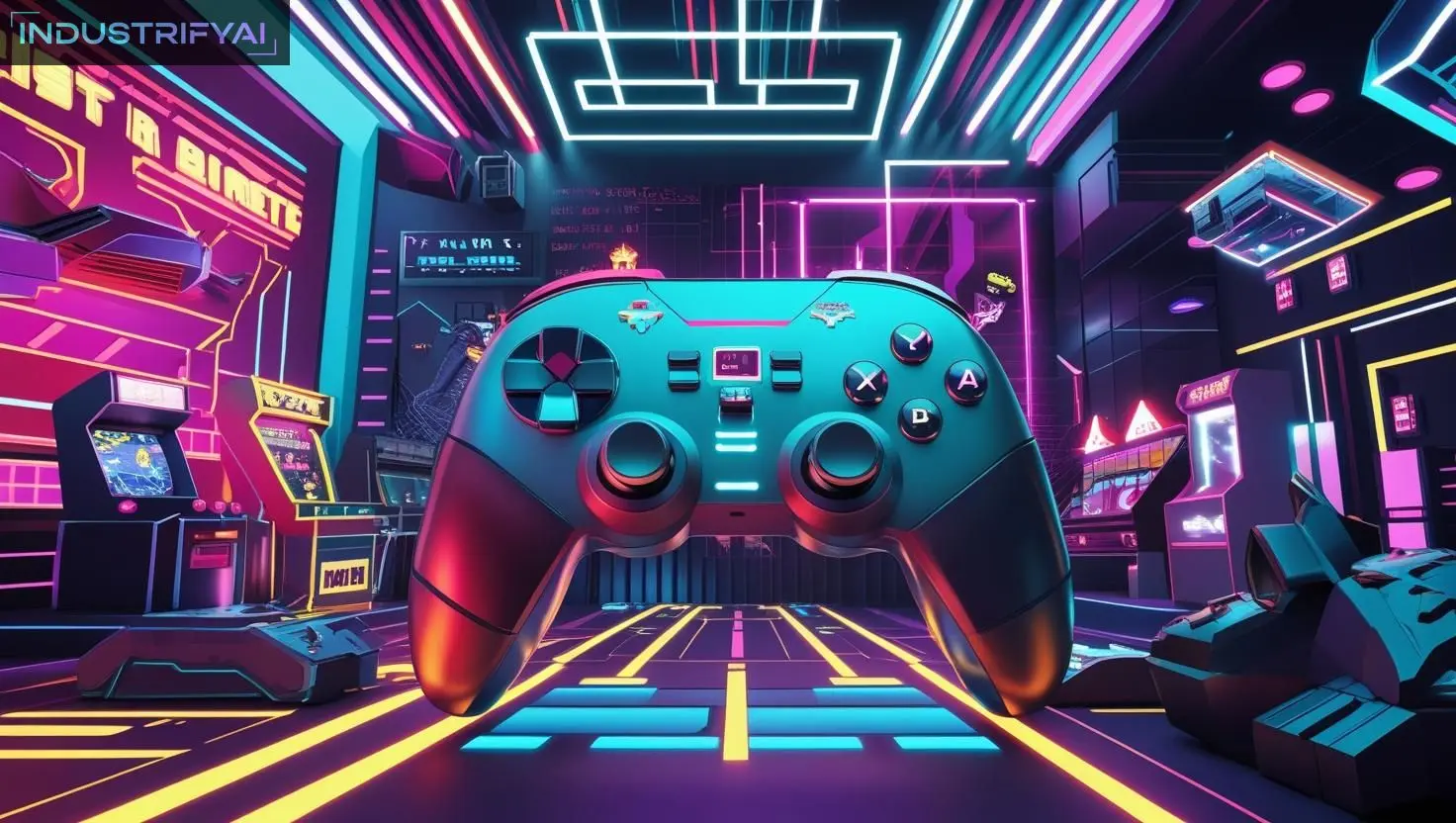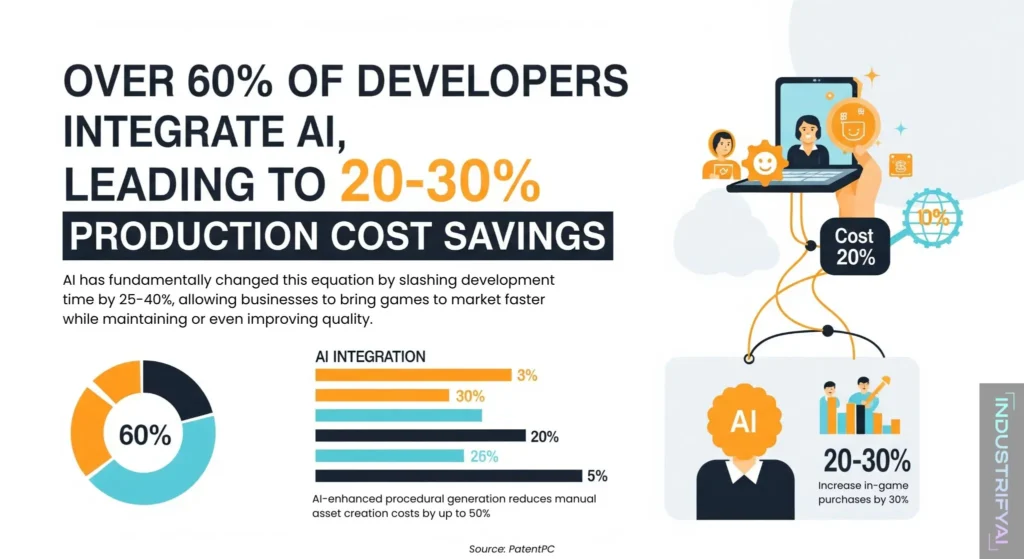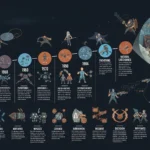
How is AI Fundamentally Changing the Games We Play?
Have you ever been outsmarted by a clever enemy in a game? Or have you explored a game world so big it felt truly endless? Perhaps you made a choice in a story and watched a character remember it hours later. If so, you have seen the magic of artificial intelligence. This “magic” is AI in gaming, a technology that is no longer a simple gimmick. In fact, it has become a powerful force in the industry. It actively reshapes how we design, develop, and play games.
This article will explore the many roles of AI in gaming. For example, we will look at the code that builds new worlds and the smart characters that live in them. Ultimately, we will see how it changes our entertainment. Before we dive in, however, it’s good to understand the basics. For a foundational guide on the core ideas, you can explore our detailed article on what AI is in gaming.
The Evolution of Intelligence in Games: A Quick Rewind
The history of AI in games is nearly as old as video games themselves. The journey began with simple but effective rules. For instance, think about the classic arcade game Space Invaders from 1978. The alien horde descended in a coordinated pattern. This was a basic form of AI. Its goal was to create a consistent challenge. For a long time, this was the main purpose of early game AI: to be a fun, scripted obstacle.
For decades, this approach was the standard. Enemies followed fixed paths. In addition, non-player characters (NPCs) repeated the same lines of dialogue. However, the world of Artificial Intelligence in video games has changed a lot since then. Modern AI is no longer just about predictable challenges. Instead, it’s about building living, believable worlds. The journey from simple patterns to today’s complex AI is amazing. For a deeper look at the key moments, you should check out our comprehensive history of AI in gaming.
The Architect’s New Toolkit: How AI is Used in Game Development and Design
Today’s amazing game worlds are not built by hand alone. In fact, developers now use a powerful toolkit driven by artificial intelligence. This has completely changed the game creation process. As a result, it has become faster, cheaper, and more creative. This new era of AI game development is exciting for creators and players alike.
Intelligent Creation: AI for Procedural Content Generation (PCG)
One of the biggest uses of AI in Gaming is Procedural Content Generation (PCG). With PCG, developers don’t have to design every mountain, tree, and cave by hand. Instead, they create rules and let an AI algorithm generate the content. A famous example is the game No Man’s Sky. It uses PCG to generate a universe with over 18 quintillion planets. Consequently, each planet has its own unique life and landscape. This offers players a nearly infinite world to explore. This method has two huge benefits. First, it saves a lot of time and work. Second, it gives gamers a reason to play again and again.
The Rise of Generative AI: Accelerating Asset Creation
Generative AI is the newest wave of artificial intelligence for games. This technology further speeds up the creative process. Tools like Midjourney can create high-quality art, textures, and 3D models from simple text prompts. For instance, a developer could type “a glowing sword on a stone altar” and get many designs in seconds. This technology also helps create dialogue and music. By automating these early steps, Generative AI helps smaller studios make high-quality games. Therefore, it levels the playing field in AI game development.
Dynamic by Design: AI-Driven Game Design and Storytelling
AI also helps create experiences that adapt to the player. One such method is Dynamic Difficulty Adjustment. Here, the AI studies how you play. It then subtly changes the game’s challenge to match your skill level. If you are struggling, the game might give you more health packs. On the other hand, if you are winning easily, it might add tougher enemies. Valve’s Left 4 Dead series uses this system very well. Its “AI Director” controls zombie spawns to keep every match feeling new and exciting.
This adaptive approach also applies to storytelling. For example, the “Nemesis System” in Middle-earth: Shadow of Mordor is a great showcase of AI in gaming. Enemy orcs remember their past fights with you. An orc you defeat might return later with a scar and a grudge. This creates personal stories where your actions directly shape the world around you.
The Unseen Polish: AI in Game Testing and Optimization
Before a game is released, it needs thousands of hours of testing. AI is changing this important Quality Assurance (QA) phase. Developers can use AI bots to act like human players. These bots play the game over and over to find bugs and glitches. They can check every corner of a map much faster than a human team.
Furthermore, AI improves a game’s technical performance. Technologies like NVIDIA’s Deep Learning Super Sampling (DLSS) use AI to boost frame rates. DLSS renders the game at a lower resolution. Then, it uses a trained AI to intelligently upscale the image. The result is smoother gameplay with beautiful graphics, even on older computers. Using AI in video games this way makes high-end gaming available to more people.

The Player’s Experience: How AI is Used in Game Playing
While AI helps a lot in development, its biggest impact is felt during gameplay. The quality of the AI in a game can make all the difference. It can turn a flat, lifeless world into an immersive and challenging one.
Beyond Scripts: Crafting Believable NPCs
The days of boring, predictable NPCs are ending. Modern AI games feature smart characters with complex behaviors. They react to your actions, work together, and change their plans. A great example is the Xenomorph from Alien: Isolation. This single enemy is not scripted. Instead, its AI learns from you. For example, if you hide in lockers too often, it will start searching them. This creates a real sense of being hunted by an intelligent creature. This level of AI in gaming was not possible with older methods.
Fair Play: AI in Matchmaking and Anti-Cheat
In online gaming, fairness is very important. AI plays a big part in keeping things level. For example, Skill-Based Matchmaking (SBMM) systems use AI to analyze player data. The system then places you in matches with others of a similar skill level. This makes most games feel competitive and fun.
At the same time, AI is the main defense against cheating. It can analyze player behavior to spot signs of cheating software. By flagging these players, AI helps keep online gaming fair for everyone. This is a crucial role for AI in gaming today.
A World That Reacts: AI-Powered Immersion
Beyond individual characters, AI makes the whole game world feel more alive. For instance, you can see this in the large crowd simulations in games like the Hitman series. In these games, hundreds of NPCs have their own routines and react to what you do. You can also see it in advanced physics systems, where AI helps simulate how buildings fall apart. This use of AI in gaming creates a more believable and immersive world.
The Ultimate Proving Ground: The Importance of Game Playing for AI Advancement
The link between AI and gaming is a two-way street. It is not just about what AI does for games. It is also about what games do for AI research. Games provide perfect digital sandboxes to train and test advanced AI models using a method called reinforcement learning.
Reinforcement Learning in a Digital Sandbox
Reinforcement learning gives an AI a goal. It then rewards the AI for actions that move it closer to that goal. A game is the perfect place for this. The rules are clear, the goals are defined, and the results are easy to measure. By playing a game millions of times, an AI can learn complex strategies from scratch. Eventually, it can become better than any human player.
Landmark Victories: From AlphaGo to AlphaStar
Google’s DeepMind has shown the power of this method with several big wins. In 2016, its AlphaGo program defeated the world champion of Go, a board game far more complex than chess. Later, DeepMind’s AlphaStar reached the top level in the strategy game StarCraft II. The AI had to manage long-term planning and complex controls. These victories in AI games are important because the problem-solving methods have real-world uses in fields like medicine and science.
The Business of Pixels: AI’s Impact on the Gaming Industry
The influence of artificial intelligence in the gaming industry is also a major economic driver. This technology creates new ways to make money, improves player engagement, and shapes the market’s future. The business of making games is stronger because of AI in gaming.
Market Growth and Economic Impact
The numbers speak for themselves. The global AI in gaming market is seeing huge growth. It is currently valued at billions and is projected to grow much more in the coming years. In fact, experts predict a compound annual growth rate of over 20%. This incredible growth shows how deeply developers have integrated AI into all parts of the industry.
Understanding the Player: AI in Analytics and Monetization
Modern games collect a lot of player data. AI systems are key to analyzing this data to understand how people play. By finding patterns, developers can learn which features are popular and where players get stuck. This data helps companies improve player retention. It also allows for better monetization, such as offering personalized deals in the game store.
The Future is Now: What’s Next for AI in Gaming?
The changes we’ve seen are just the start. The future of AI in gaming promises even more amazing experiences. We are entering a new era where the line between a game and a living world will blur.
For example, imagine hyper-personalized stories generated just for you. Picture talking to NPCs that can hold real, unscripted conversations. Think about a future where players can use AI to create their own characters and quests inside a game. Artificial Intelligence in gaming is no longer a distant dream. It is a present-day reality that makes gaming more creative and immersive. As we’ve seen, its impact is widespread and profound. To explore this transformation further, read our article on how AI is revolutionizing the gaming industry.
Conclusion
From simple arcade patterns to complex neural networks, artificial intelligence has changed video games. It is a powerful tool for developers and a smart opponent for players. Moreover, it is a creative partner in design and a driver of industry growth. The future will be a team effort between human creativity and artificial intelligence. Together, they will build the next generation of entertainment worlds that are more personal and amazing than we can even imagine today.
Reference:-
- Developer Adoption: Over 60% of game developers are now integrating AI into their development workflows. (Source: PatentPC)
- Production Cost Savings: AI-driven game development has been shown to reduce production costs by 20-30%. (Source: PatentPC)

